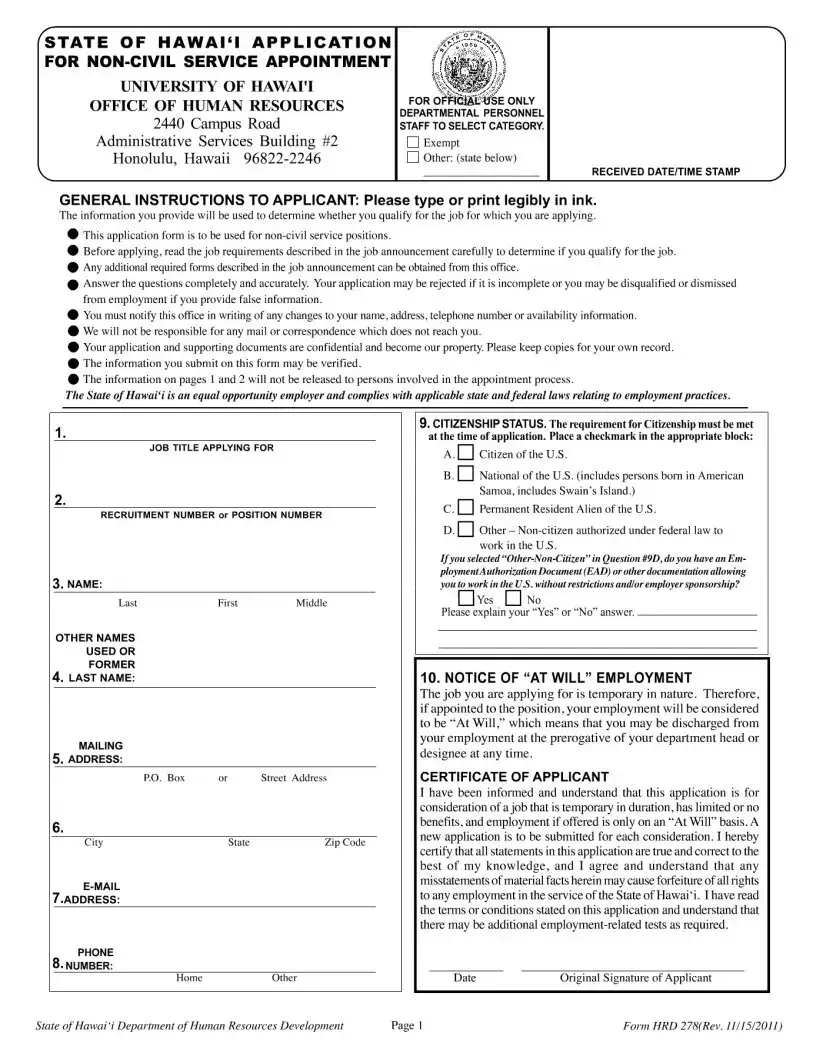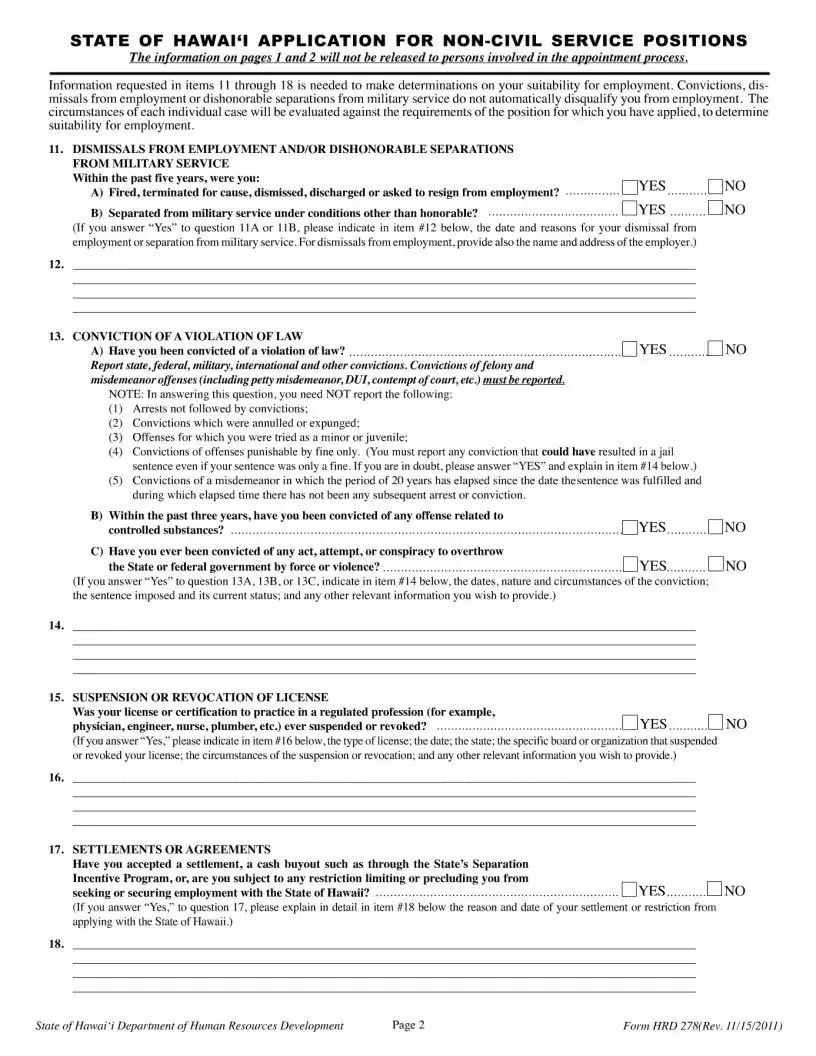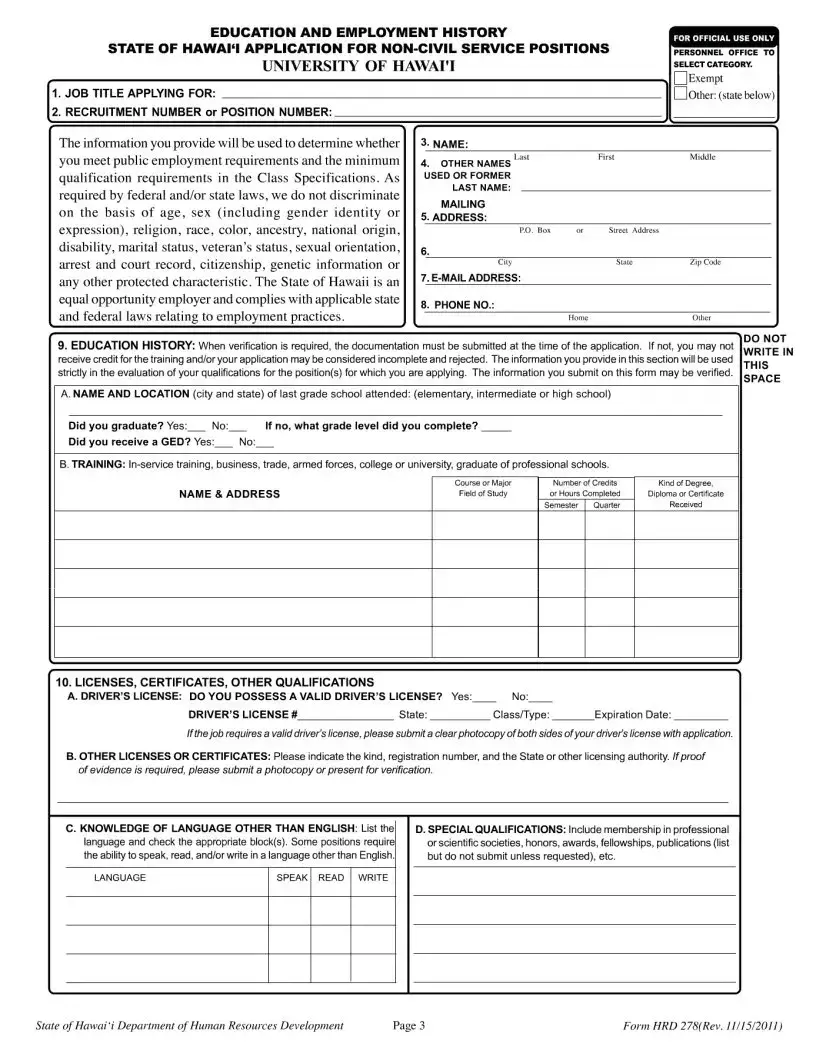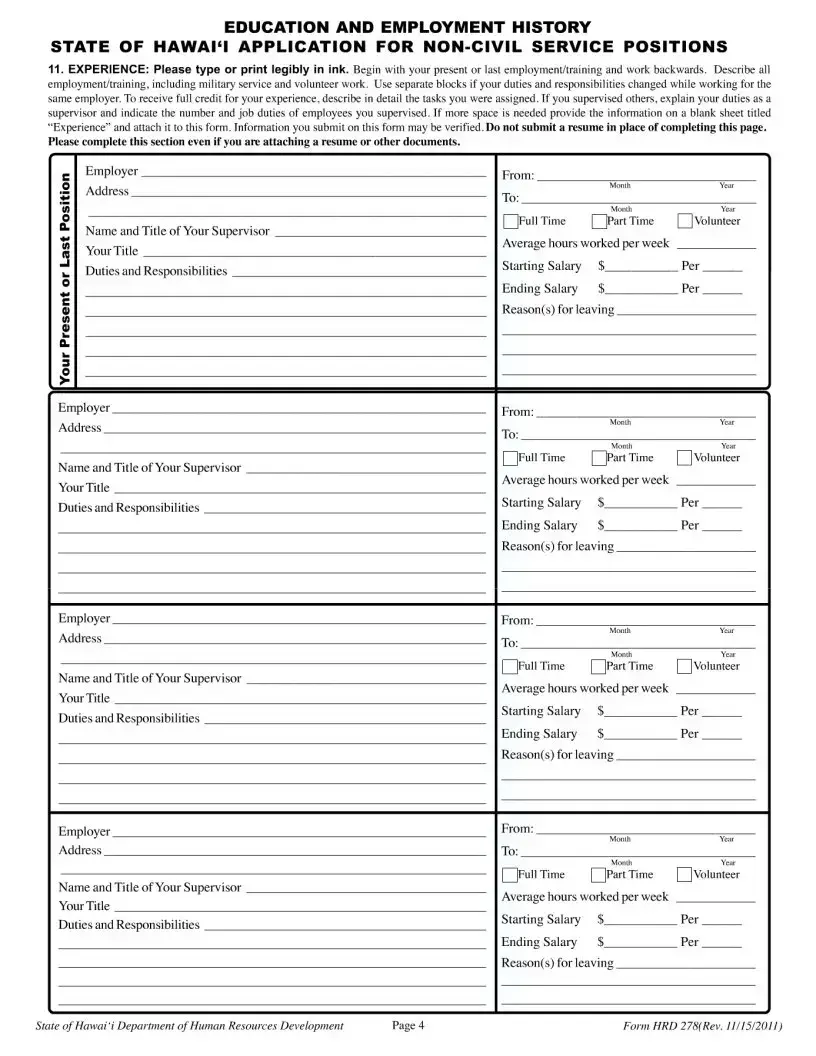Fill Your State Of Hawaii Hrd 278 Template
The State of Hawaii HRD 278 form serves as an official request for employee training, allowing government departments to apply for training opportunities that aim to improve employee skill sets and performance. This form is a crucial tool in ensuring that employees receive the necessary training to keep their knowledge and skills up to date, which contributes to the efficiency and effectiveness of public services in Hawaii. For those looking to apply for employee training, filling out the State of Hawaii HRD 278 form is the first step; click the button below to get started.
Fill Out My Form Now



